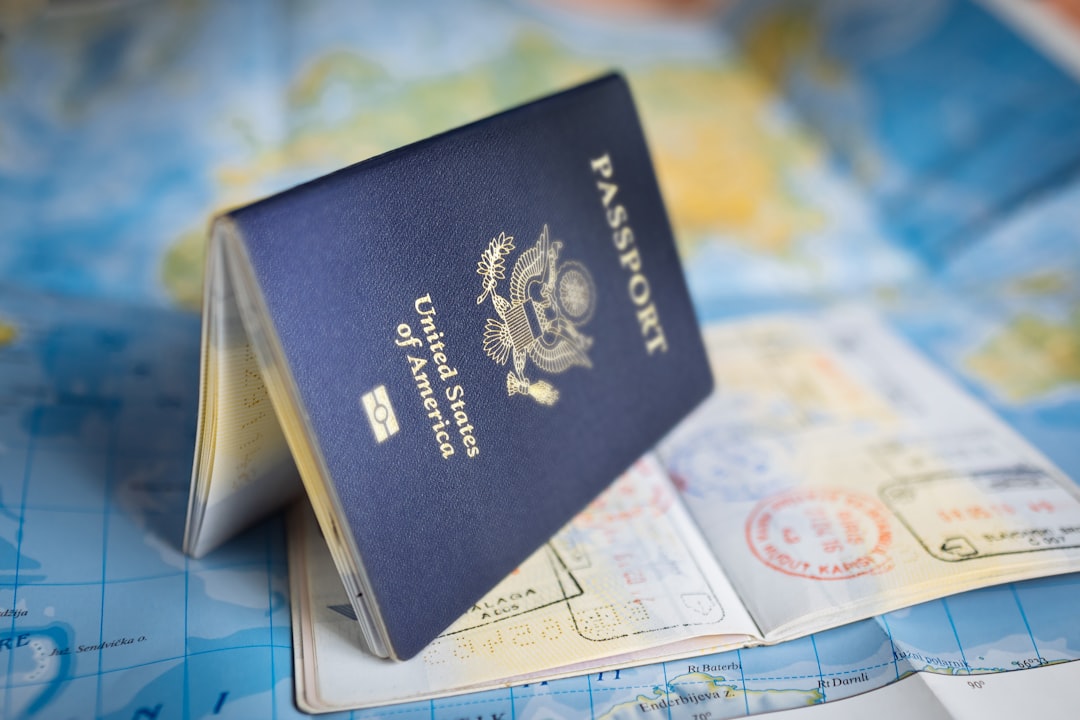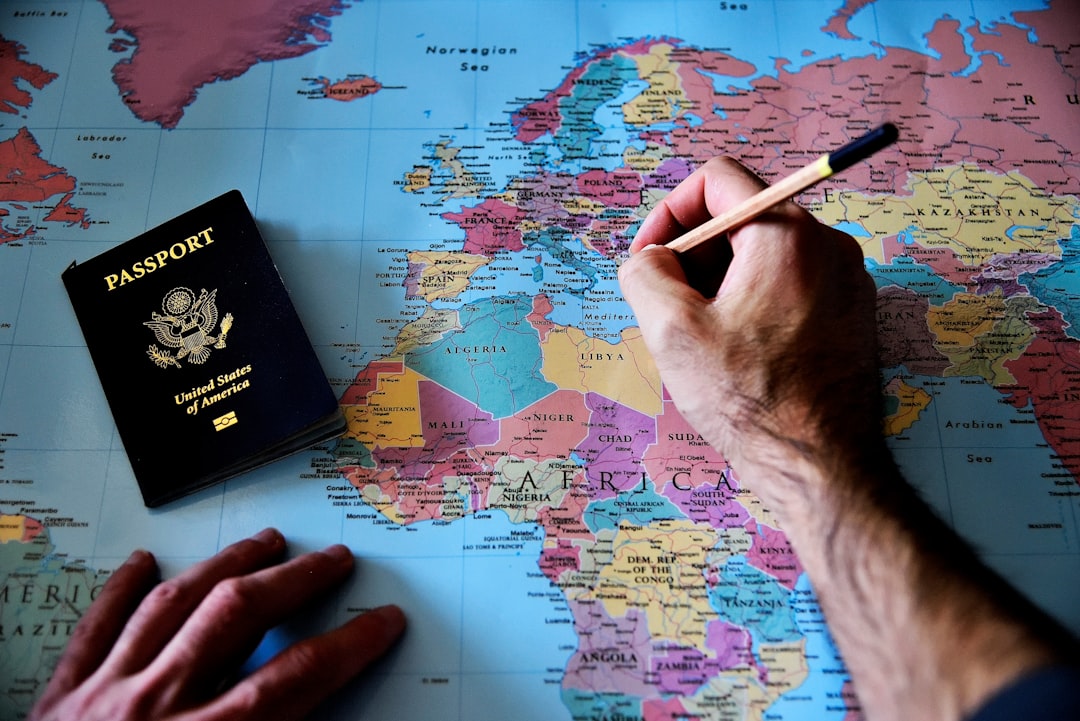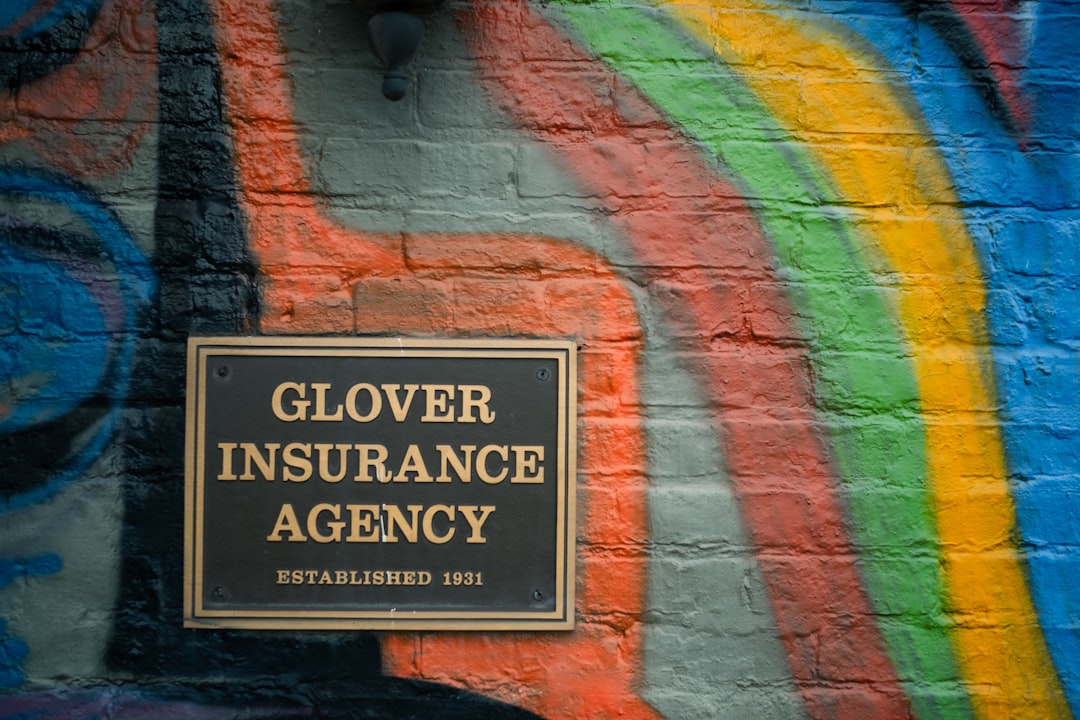

Engage prospects with a scan and streamline customer engagement with FREE QR code marketing tools by Sona – no strings attached!
Create a Free QR CodeFree consultation

No commitment

Engage prospects with a scan and streamline customer engagement with FREE QR code marketing tools by Sona – no strings attached!
Create a Free QR CodeFree consultation

No commitment
In today’s digitally connected environment, travel insurance providers continually face challenges such as fragmented customer touchpoints, missed engagement opportunities, and unclear policy coverage for travelers. QR codes have evolved from simple convenience tools into strategic links, seamlessly connecting offline interactions at airports and agency lobbies with responsive, data-driven digital support.
Travelers navigating policy options while abroad often experience confusion and frustration without instant access to necessary information, risking missed conversions and customer dissatisfaction. QR codes transform traditional paper documents, brochures, and ID cards into interactive portals for education, fast claims processing, appointment scheduling, and tailored support, closing gaps that lead to lost high-value prospects and untracked engagement.
Integrated throughout marketing assets and customer journeys, QR codes empower travel insurance providers to identify customer intent, accelerate onboarding, and deliver more personalized service. This practical technology enables insurers to address persistent industry pain points and achieve measurable growth through smarter, more connected interactions.

For travel insurance providers, the challenge is not a lack of information, but ensuring the right insight reaches the traveler at the moment of need. Prospects frequently browse services or educational resources without making direct contact, leaving valuable opportunities invisible. QR codes serve as a modern bridge, allowing providers to connect with these anonymous prospects at key points of high intent and to guide them to policy comparison tools, plan information, and appointment scheduling without friction.
To address these challenges and business objectives, start by mapping where education and action often stall. Printed brochures, paper claim forms, and business cards are still common in agencies and at airports, yet they rarely produce measurable engagement. By placing QR codes on these materials that link to concise plan explainers, video FAQs, real-time support, and calendar-based agent bookings, providers transform static resources into interactive journeys. This approach reduces manual steps, improves clarity, and shortens time to value.
For example, converting a paper claims form into a QR-driven digital flow lowers errors and accelerates processing. Travelers scan from an ID card to upload photos, geotag incidents, and receive step-by-step guidance. Each step updates the CRM and the claims system, enabling status notifications and targeted assistance, so every interaction improves operational intelligence and customer experience.

Persistent friction in travel insurance, such as anonymous offline engagement, unconverted interest, and policy confusion, undermines both customer satisfaction and revenue growth. QR codes address these industry challenges by making it simple for travelers to move from a poster or brochure to a specific action like appointment scheduling, plan information, or claim initiation, all in a single scan.
Providers benefit because QR codes turn physical assets into measurable gateways. Rather than relying on phone numbers and manual data entry, a QR can present the right content for the traveler’s situation, in their language, with guidance appropriate to their itinerary and coverage type. This reduces pressure on call centers, improves accuracy, and strengthens confidence at critical decision moments. For practical ideas, see Vya Systems’ innovative uses for insurance marketers.
Through these benefits, travel insurers transform anonymous and fragmented encounters into opportunities for education, engagement, and revenue. The result is a connected experience for policyholders and prospects that matches the speed and expectations of modern travel.

Insurance providers often struggle with fragmented processes and inconsistent engagement, especially within physical campaigns that are difficult to track. QR codes offer flexible formats that align with a variety of high-impact use cases, so the right format can be matched to the right job at each moment in the journey.
The following formats have proven especially effective in travel insurance. Dynamic codes are recommended for most customer-facing scenarios because they can be edited post-launch and support analytics.
When managed centrally in a tool such as Sona QR, teams can standardize design, enforce brand consistency, and monitor performance across every material and market. This centralization reduces errors from ad hoc code generation and eliminates redundant or outdated assets.

Many travel insurance providers struggle to link prospect engagement to downstream sales, especially when journeys bridge offline and online channels. Strategic QR placement turns every scan, from brochures to airport kiosks, into a measurable interest signal that feeds your CRM and triggers automated nurturing.
Focus on the places where travelers make decisions or seek clarification. These moments are especially fertile for appointment scheduling and plan information, because the traveler is already evaluating risk, weighing options, and facing time constraints. When a QR provides immediate clarity and a path to book help, you can capture momentum and reduce drop-off.
By positioning QR codes where intent peaks, you create a connected path from discovery to decision. Each scan informs targeting, identifies purchase barriers, and illuminates content gaps that can be addressed in your next campaign cycle.

Thoughtful placement of QR codes along the customer journey helps capture hidden purchase intent and recover otherwise lost conversions. The most effective use cases solve a specific friction point, minimize steps, and provide clear outcomes like booking an appointment or accessing plan information.
Use cases should also be closely tied to measurable goals. For example, an appointment scheduling QR on an agent’s business card can be tracked for conversion to meetings and close rates, while a claim initiation QR on policy cards can be correlated with average handling time and first-contact resolution.
These use cases shift insurer-customer relationships from passive to active, converting interest into measurable actions. When paired with dynamic codes and robust analytics, providers can test variations and continuously improve conversion at each step.
Anonymous or untracked engagement leads to missed opportunities for retargeting and upselling. QR code scans, labeled by campaign and channel, signal intent and enable precise follow-up across email, SMS, and paid media. For travel insurance providers, the most effective segments distinguish between policyholders and prospects, as well as between service needs such as claims or plan upgrades.
Start by assigning unique QR codes to each placement and journey stage. Awareness codes on brochures should be different from consideration codes on comparison sheets, and distinct from conversion codes on renewal notices. When each code has a clear role, your analytics can reveal where interest spikes and where additional guidance is needed to move the traveler forward.
With Sona QR, each scan becomes a smart entry point into your funnel. Providers can consolidate scan data across placements, enrich contact records automatically, and run retargeting that reflects real behavior rather than assumptions.
Disconnected campaigns often lead to redundant messaging, inconsistent experiences, and wasted budget. QR codes act as connectors that make offline materials interactive, unify data collection, and ensure that every customer encounter can progress to the next step without friction. This integration is especially valuable in travel insurance, where journeys frequently begin offline with a brochure or partner mention.
A connected QR strategy aligns creative, placement, and measurement across print and digital. It also helps teams coordinate with partners like travel agencies, airlines, and hotels. When all codes are managed in a central system, marketing, sales, and service teams can see the same data, evaluate performance by channel, and adjust content for the next wave of travelers.
With a centralized platform like Sona QR, providers can monitor scan performance across channels, sync data to their CRM, and build automated flows that nurture each audience segment based on scan behavior and outcomes.
QR initiatives deliver the most value when they are planned with clear outcomes, deployed in high-intent contexts, and measured end to end. The following checklist outlines a practical path from concept to optimization that travel insurance teams can use repeatedly.
Define a crisp goal for each campaign. Examples include plan education for undecided travelers, calendar-based appointment scheduling after a brochure scan, claim initiation from an ID card, or renewal with upsell from a direct mailer. Each use case should connect directly to a metric such as booked appointments, completed claims, or conversion rate on plan upgrades.
Align the QR code’s purpose with a specific moment in the traveler’s journey. For instance, use Scan to compare plans in agency materials, Scan to book a consult on agent business cards, and Scan to file a claim on policy documents. The best use cases reduce steps and answer a pressing need in context.
Choose static codes for destinations that will never change, like a brochure PDF. Choose dynamic codes for campaigns that need tracking, flexible destinations, or testing. Dynamic codes are recommended for most customer-facing flows, especially when analytics and retargeting are priorities. Learn more about static vs. dynamic on sqr.me.
In travel insurance, dynamic codes are ideal for appointment scheduling, claims intake, and plan information pages. If a landing page changes or needs localization, dynamic codes can be updated without replacing print materials, which saves time and protects budgets.
Incorporate your logo, brand colors, and a clear frame that stands out. Place a short, benefit-driven call to action near the code such as Scan to book a call in 30 seconds or Scan for your plan benefits. Ensure adequate size and contrast for scanning in varied lighting.
Test with multiple devices and in real-world environments. Check scannability from different angles, distances, and surfaces like glossy brochures or matte posters. Validate the landing experience for speed, accessibility, and mobile usability, and ensure it supports travelers with limited connectivity.
Prioritize placements where decisions are made or where customers need fast help. This includes agency brochures, airport counters, partner itineraries, direct mail renewals, and policy ID cards. For appointment scheduling and plan info, deploy codes on agent cards, branch signage, and follow-up emails.
Match placement to behavior and context. For example, use larger codes on airport signage to accommodate scanning at a distance. On wallet cards and ID badges, keep the code compact but crisp, and include a clear label such as Claims 24/7 or Compare plans.
Use Sona QR to track scans by time, location, device type, and campaign source. Monitor conversion behavior and drop-off points in the landing experience, and run A/B tests on calls to action, page layout, and code design. Treat each code as a mini funnel that can be optimized for clarity and speed.
Feed results into a shared dashboard. Compare performance across partners, airports, and materials. Double down on high-performing placements, phase out underperformers, and revise messaging based on scan-to-action rates. Schedule quarterly audits to keep content current and aligned with seasonal travel patterns.
A lack of attribution and limited lead intelligence often hinder marketing ROI in insurance. QR codes unlock real-world engagement data that providers can connect to outcomes such as quotes, appointments, and closed sales. When analytics are centralized and tied to CRM records, teams can see the full impact of offline materials on digital behavior and revenue.
Knowing that someone scanned a code is useful, but the real value comes from understanding what happened next. Did they book a call, submit a claim, or review plan benefits and then upgrade? The combination of QR analytics and CRM integration turns isolated scans into a coherent narrative that drives smarter investments.
Sona QR captures real-world interactions and Sona.com translates them into actionable insights. Together they elevate QR codes from a convenience tool to a core component of performance marketing and service delivery.
QR campaigns often fall short when they are generic, siloed from CRM data, or not promoted by staff. The most successful providers treat QR codes as a front door to automated, personalized journeys that continue well beyond the initial scan. This requires clear CTAs, thoughtful placement, and a strong integration strategy.
Choose the practices that best match your primary media and desired outcomes. For travel insurance, this typically means brochures and branch signage for education, business cards and email for appointment scheduling, and policy documents for claims and renewals. Layer automation on top so no scan goes to waste.
Start creating QR codes for free. The platform will help you standardize design, enable dynamic updates, and connect scan data to your CRM and campaigns.
Travel insurance providers can overcome fragmented experiences and unmeasured engagement by deploying QR-enabled workflows that guide travelers from uncertainty to action. Strategic placements and dynamic destinations are the backbone of this shift.
Below are examples that combine clear value propositions with strong calls to action. These ideas can be adapted to your brand, markets, and partner ecosystem.
These examples demonstrate how QR innovation improves outcomes for both customers and the business. The common threads are clarity, relevance, and measurement.
Industry pain points like lost conversions at high intent moments, inconsistent messaging across partners, and siloed data are often the result of avoidable missteps. Strong QR execution requires attention to user experience, analytics hygiene, and team enablement.
Begin with a benefit-driven call to action and an immediate next step that feels useful. Test the visual treatment so the code stands out without overwhelming the design. Align every code with a specific landing experience, not a generic homepage, and make sure the experience is mobile first and fast.
QR codes are emerging as a practical solution to longstanding frustrations in the travel insurance sector, enabling on-demand access to education, appointment scheduling, and claims services at every stage of the customer lifecycle. By turning every touchpoint into a data-rich opportunity, providers move beyond manual processes and disconnected campaigns to deliver consistent value.
Modern travelers expect affordable, responsive coverage, and when anonymous intent or incomplete journeys go untracked, insurance companies pay the price in missed conversions and eroded loyalty. QR codes provide the infrastructure for real-time, context-sensitive interactions that capture, nurture, and retain customers more effectively than traditional methods.
Ultimately, by embedding QR-enabled intelligence into everyday assets and refining strategy with real-time analytics, travel insurance providers unlock new levels of efficiency and customer satisfaction. The result is measurable growth and a durable competitive edge that aligns with how people actually plan, book, and experience travel today.
QR codes have revolutionized travel insurance providers by transforming how customers access plan information and schedule appointments with ease. By integrating QR codes, providers can educate customers instantly, streamline the onboarding process, and enhance overall satisfaction—all while capturing valuable engagement data to refine their outreach. Imagine your customers scanning a code to instantly view personalized coverage details or book consultations without delay, elevating their experience and trust in your service.
With Sona QR, travel insurance providers gain the power to create dynamic, trackable QR codes that update in real time without reprinting materials. This means you can adapt campaigns on the fly, measure exactly which touchpoints drive customer education and appointment bookings, and link every scan directly to business outcomes. No more guesswork—just actionable insights and smoother customer journeys.
Start for free with Sona QR today and turn every scan into an opportunity to educate, engage, and grow your travel insurance business.
The article does not list specific top travel insurance providers but focuses on how providers can improve customer engagement using QR codes.
Choose a provider that offers clear, accessible policy information, fast claims processing, and personalized support, ideally facilitated by technologies like QR codes for seamless engagement.
Look for policies that provide clear coverage details, easy claims initiation, emergency contacts, and flexible benefits that can be accessed on-demand through digital tools such as QR codes.
The article does not specify typical travel insurance costs but emphasizes the value of using digital engagement to improve service and reduce costs.
Travel insurance offers protection through coverage for claims like medical emergencies and lost baggage, provides peace of mind, and ensures fast support and claims processing especially when integrated with digital tools like QR codes.
QR codes transform static materials into interactive portals that provide instant access to policy details, claims filing, appointment scheduling, and personalized support, reducing confusion and speeding up service.
Place QR codes on agency brochures, airport signage, policy documents, ID cards, direct mail renewal notices, partner materials, and agent business cards to capture high-intent moments and facilitate immediate action.
Dynamic QR codes are recommended for most customer-facing scenarios as they allow content updates and tracking; common formats include web links, forms, vCards, app downloads, and SMS or email launchers.
Providers should monitor scan metrics like time, location, device, and campaign source, integrate data with CRM systems, run A/B tests on calls to action, and adjust placements based on performance insights.
Avoid generic or poorly placed codes, lack of clear calls to action, disconnect from CRM data, untrained staff, and failure to test for usability and scanning conditions.
QR codes generate labeled scan data by campaign and channel, enabling segmentation of policyholders and prospects by service needs and feeding precise follow-up campaigns across email, SMS, and paid media.
Define a clear use case, choose the appropriate QR code type, design and test the code for usability, deploy codes in high-impact channels, and track and optimize performance continuously.
QR codes unify offline and online touchpoints, enhance data collection and attribution, improve customer experience by providing seamless access to information, and enable coordinated campaigns with partners.
Yes, QR codes on ID cards or policy documents can link to mobile-friendly claim forms with features like image upload and geotagging, reducing errors and accelerating claim handling.
Content should include plan comparison tools, benefit summaries, multilingual FAQs, appointment booking calendars, claims instructions, emergency contacts, and policy updates.
Use Sona QR's trackable codes to improve customer acquisition and engagement today.
Create Your FREE Trackable QR Code in SecondsJoin results-focused teams combining Sona Platform automation with advanced Google Ads strategies to scale lead generation

Connect your existing CRM

Free Account Enrichment

No setup fees
No commitment required

Free consultation

Get a custom Google Ads roadmap for your business






Launch campaigns that generate qualified leads in 30 days or less.
